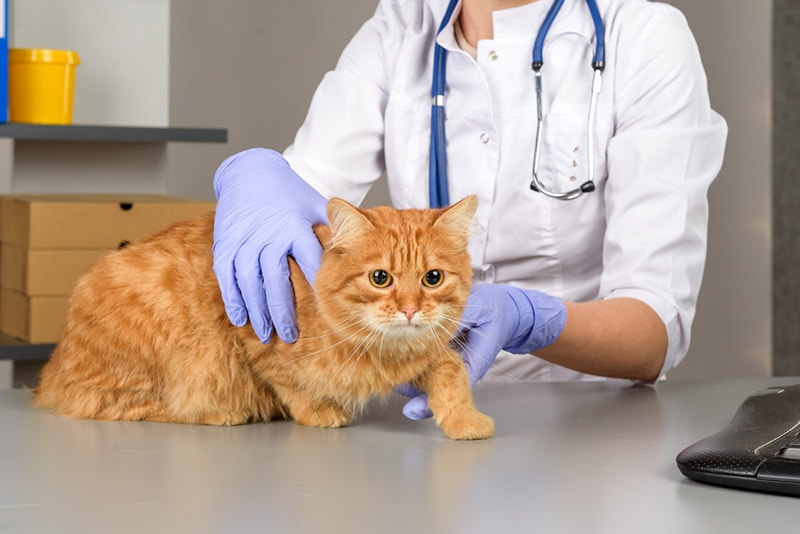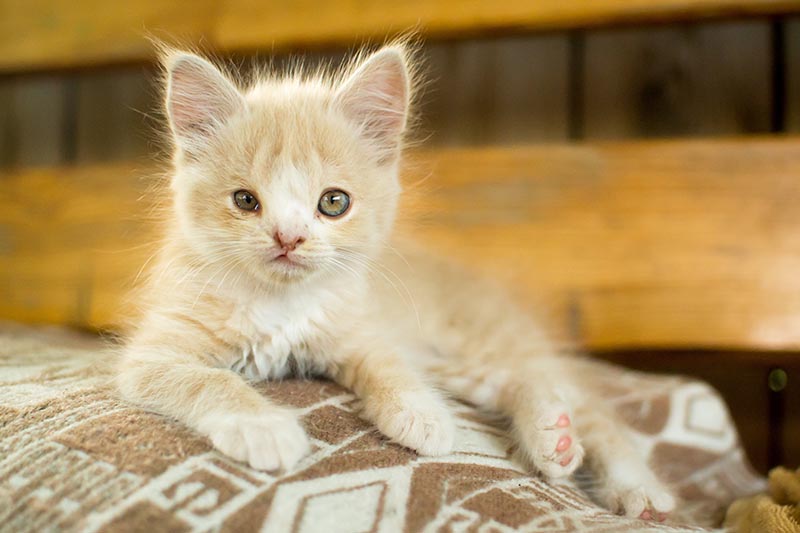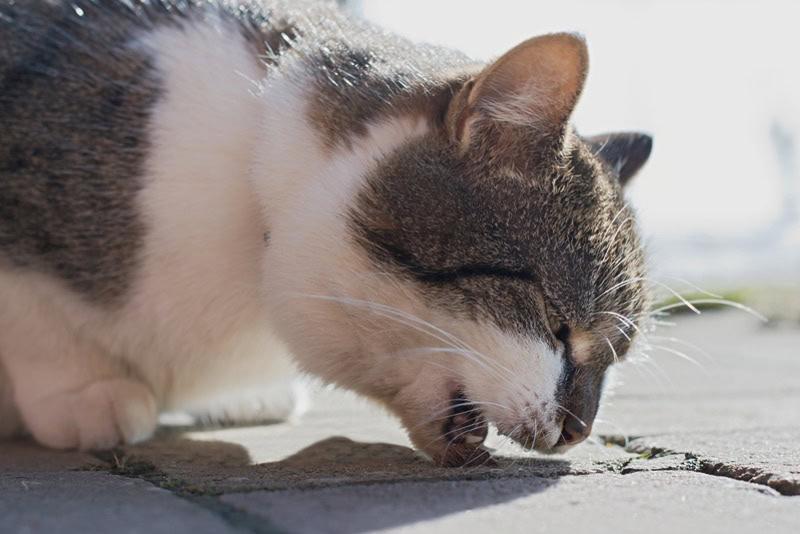VET APPROVED

The information is current and up-to-date in accordance with the latest veterinarian research.
Learn more »Click to Skip Ahead
Neurological diseases are common in cats. Due to the size and extent of the cat’s nervous system, nerve damage can manifest in many different ways. The nervous system functions by the brain sending signals through the spinal cord, and these signals travel down the nerves giving instructions to the muscles and organs on when and how to function.
If there is a problem with any of these signals, clinical signs will become apparent.

Cat Nervous System Overview
Your cat’s nervous system is made up of the central nervous system and the peripheral nervous system. The central nervous system is made up of the brain and spinal cord. The peripheral nervous system is made up of the cranial nerves, the spinal nerves, and all the other nerves in the body. Usually, these two systems work together and communicate back and forth well. Some of the nervous system functions are under conscious control, but others are involuntary. These involuntary functions are controlled by the autonomic nervous system.
Due to the widespread action of the nervous system, a range of clinical signs are seen when things go wrong. These signs depend on the location and severity of the underlying cause. It is important that cat owners are aware of the types of signs that can develop and what to watch out for so that they can seek veterinary attention as soon as possible if something is wrong.
If you see any of the following clinical signs in your cat, get in contact with a vet immediately.
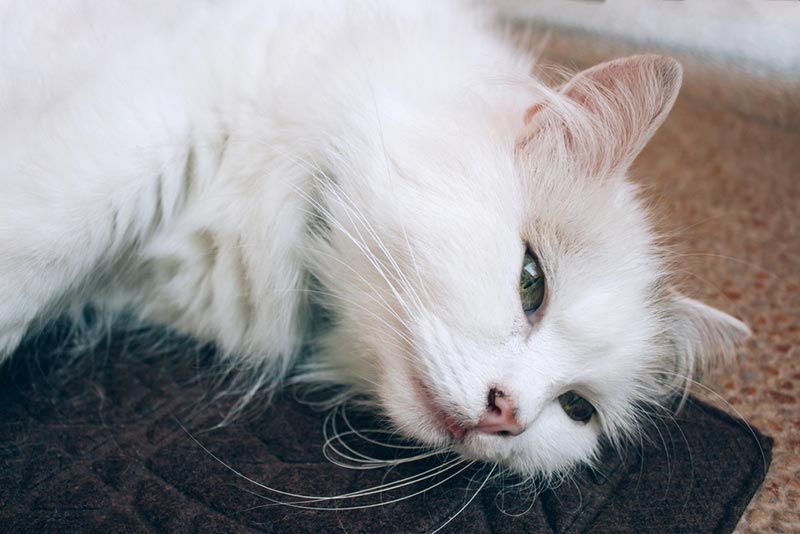

The 14 Signs of Nerve Damage
1. Seizures
Seizures are a common sign of nerve damage. Seizures occur when there is a sudden increase in abnormal electrical activity in the brain. They can be generalized or focal. Seizures can result from many things, including trauma to the brain tissue, metabolic disturbances, toxins, infections, and cancer.
2. Ataxia
Cats with nerve damage can present with ataxia or difficulty walking. They may not be able to walk at all, walk unsteadily with a wobbly gait, or circle aimlessly. Ataxia is normally caused by damage to the cerebellum, which is part of the brain. However, ataxia can also be seen if the spinal cord and peripheral nerves have been damaged.

3. Head Tilt
Your cat may start to hold their head to one side suddenly. This can be a sign of nerve damage. This is usually associated with vestibular syndrome, which is an inner ear disorder 1. A head tilt can manifest from central or peripheral nerve damage.
4. Complete or Partial Paralysis
Your cat may present with paralysis. Paralysis occurs when your cat cannot move some or all of their body. It can be permanent or temporary. It occurs when there is a disruption of the nerve signals to the muscles and usually involves peripheral nerve damage. Common causes of paralysis include injury, strokes, and nerve disorders.
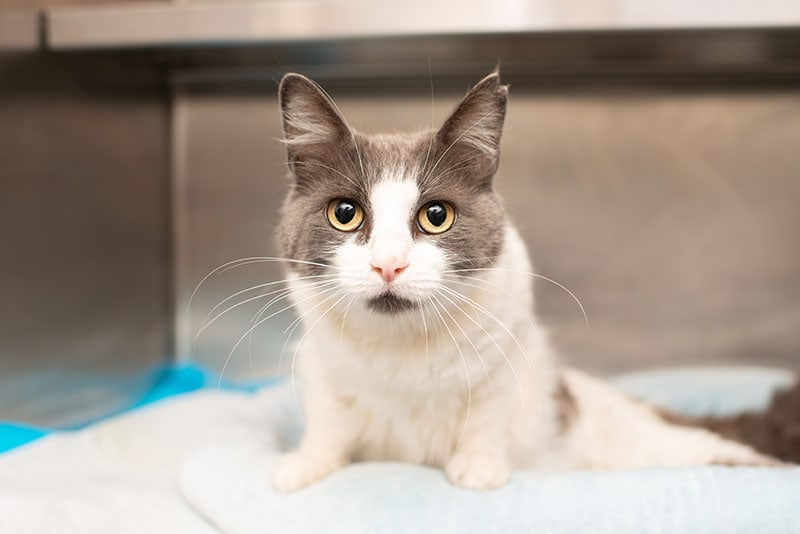
5. Fecal or Urinary Incontinence
Bladder and bowel incontinence is often seen in cats experiencing nerve damage to the nerves connecting the brain, the rectum, and the bladder. This may mean your cat isn’t aware of the build-up of urine and feces in their bladder and rectum. They may involuntarily pass urine and feces without conscious control, or they may have difficulty passing anything and become backed up or blocked.
They may lack any control, or they may have motor skills but not sensory nerves intact, or vice versa. Nerve damage that affects the control of the bladder or bowels can often affect their ability to walk and carry their tail high, too.
6. Nystagmus
Nystagmus is defined as the rhythmical, repetitive, and involuntary movement of the eyes 2. It can result from damage to the brainstem or the cerebellum. These are areas of the brain that organize balance, vision, and muscle movements and ensure they are all coordinated. Nystagmus may also arise from direct damage to the optic nerve, which can mean visual information received by the eye is misinterpreted.

7. Muscle Tremors
If your cat suddenly starts twitching or experiencing muscle tremors, it can be a sign of nerve damage. Uncontrolled muscle twitching, which is visible under the skin, is known as fasciculation, and it is often seen with peripheral nerve damage in the associated area. This is a more subtle sign lots of owners may miss depending on the size of the muscle affected.
8. Muscle Weakness
If the nerves that innervate the muscles, (also known as the motor nerves), are damaged, muscle weakness can be witnessed. Your cat may be unable to do things around the house, like jump on tables or walk up the stairs. You may notice muscle wastage. If it affects one side, you will see a difference in size when looking at your cat head-on.
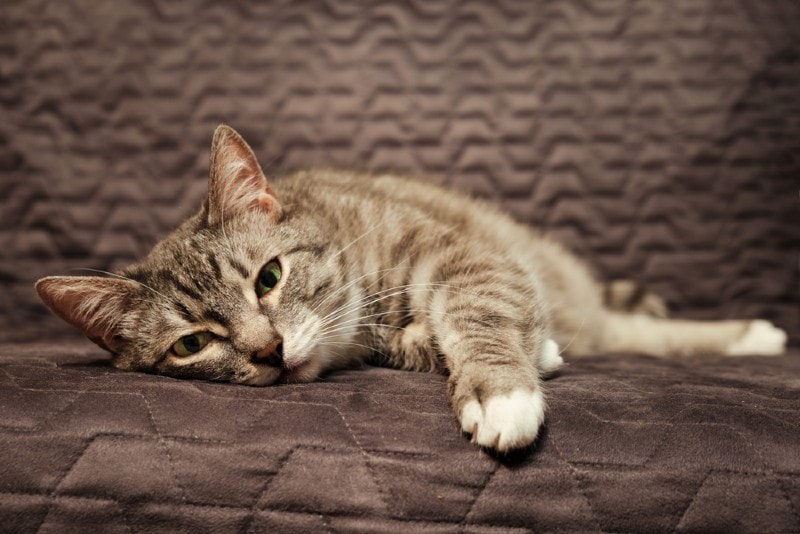
9. Numbness of Paws
This is a tricky sign to notice as your cat can’t tell you they can’t feel anything, but loss of sensation is a sign of nerve damage. You may notice your cat doesn’t react when you touch their paws, or they seem to tolerate walking on hot surfaces when normally they wouldn’t be able to.
This can be even more confusing because the motor nerves may be functioning fine, but the sensory nerves are damaged. So, your cat may be moving perfectly well, but they can’t feel certain things. Signs of sensory nerve damage vary greatly as sensory nerves cover such a wide range of functions.
10. Pain
Pain is often a sign of nerve damage. Pain related to nerve damage is called neuropathic pain. Any injury or disease process affecting the body’s nerves and their function or the brain or spinal cord directly can cause neuropathic pain. Your cat may resent being picked up or stroked. They might yowl, spit, and hiss. They may also develop a limp or become suddenly aggressive toward you or other humans or animals.
If your cat is showing signs of pain, it can be difficult to determine if it has a neurological cause or not as signs of pain can be very generalized. This is why it is very important to take them to your vet so they can get to the bottom of the problem.
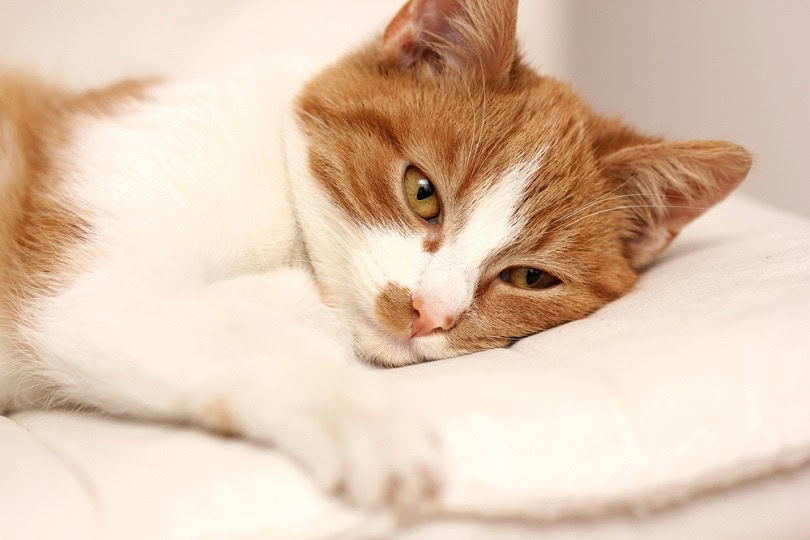
11. Behavioral Changes
If your cat suddenly experiences behavioral changes, it can be a sign of nerve damage. If there has been injury or assault to the tissues in the brain or the surrounding areas, your cat may experience behavioral changes depending on which area of the brain is affected. They may suddenly struggle with spatial orientation and become confused about where they are in a previously familiar place.
They may forget they have just been fed and beg for food, suddenly start passing urine and feces in unusual places in the house after being litter tray trained for years, have a disrupted sleep-wake cycle or start vocalizing loudly at night, or suddenly become aggressive or nervous around familiar humans or other animals.
These types of clinical signs can also be seen with normal aging changes of the brain. Some changes may be very subtle initially, so if you notice anything small, it is important to speak to a vet as soon as possible.
12. Proprioception Deficits
Cats have special sensory receptors in their muscles and organs that control the placement and movement of their limbs and digits. If your cat has a proprioceptive deficit, they will be unaware of where their limbs are in association with the rest of their body. This means that they may be unable to place their feet in the correct position when standing or walking properly.
If your cat has proprioception deficits, it is an indication of nerve damage. It can damage the brain stem, the spinal cord, or peripheral nerves.
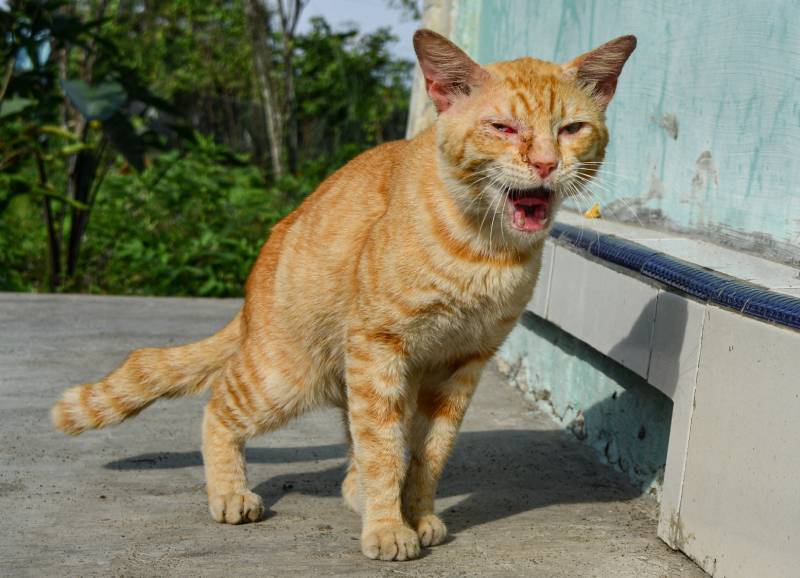
13. Loss of Reflexes
Cats have built-in reflexes that have evolved over many years. A lack of a reflex response is a sign of nerve damage to either the sensory nerve, the spinal cord, or the motor nerves involved in the specific reflex response. It can be difficult for owners to assess reflex responses at home, but your vet has all the equipment for the appropriate tests.
14. Loss of Consciousness
If there is an issue in your cat’s central nervous system that causes the body to stop functioning correctly, it can lead to a drop in blood pressure, which may result in loss of consciousness. If the vagus nerve is hyper-stimulated, it can cause an increase in heart rate and a decrease in blood pressure, causing loss of consciousness. Cats can get degenerative myelopathies, which damage the spinal cord and cause misfired sensory messages to be sent to the brain and peripheral nerves, which can result in loss of consciousness, too.


Conclusion
Due to the extent and complexity of the nervous system in cats, signs of nerve damage can vary greatly and manifest in a various ways. It is very helpful for cat owners to be aware of signs that may indicate nerve damage. If you see any of these signs displayed by your cat, contact your vet for an appointment immediately.
Featured Image Credit: M. Arkhipov, Shutterstock
